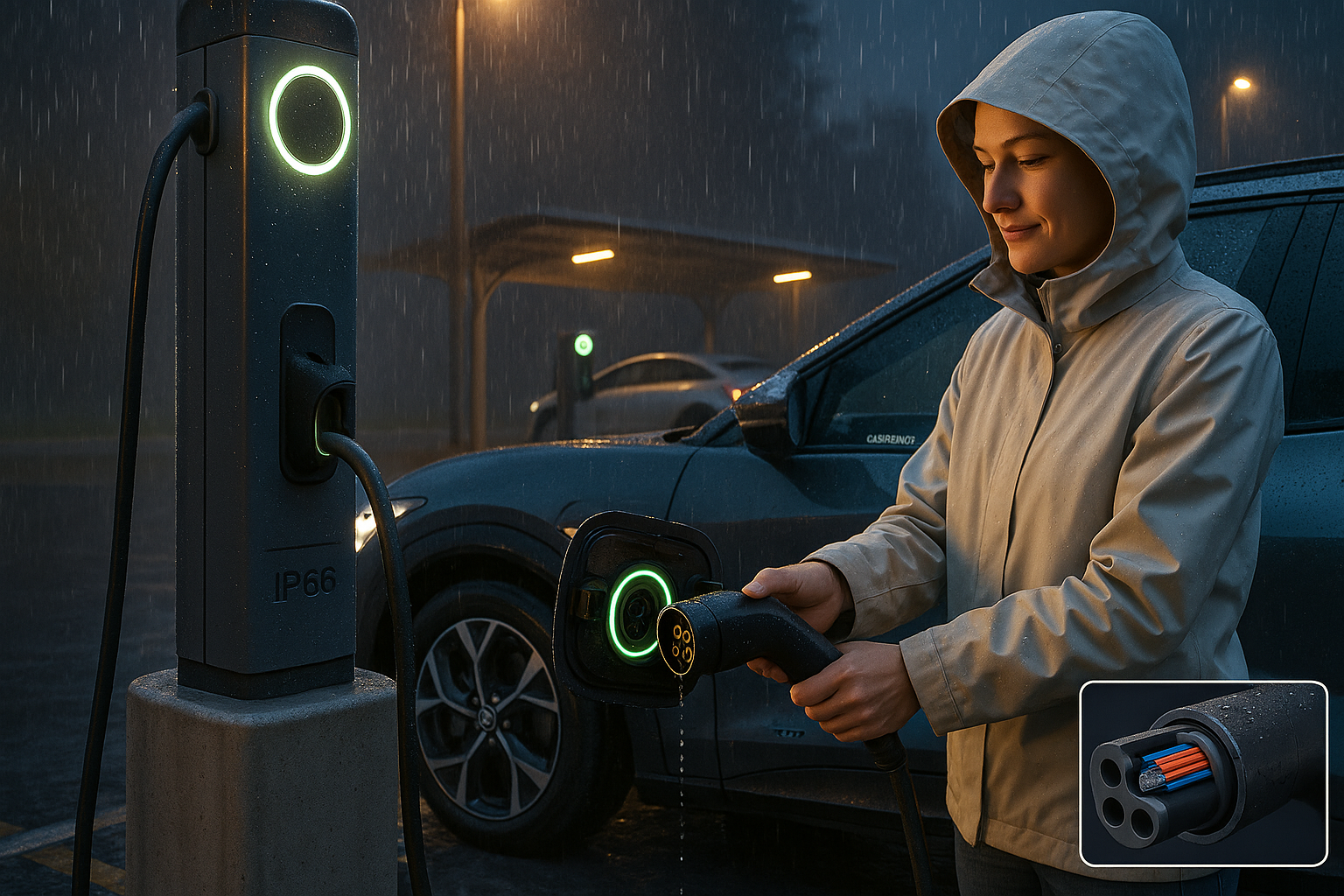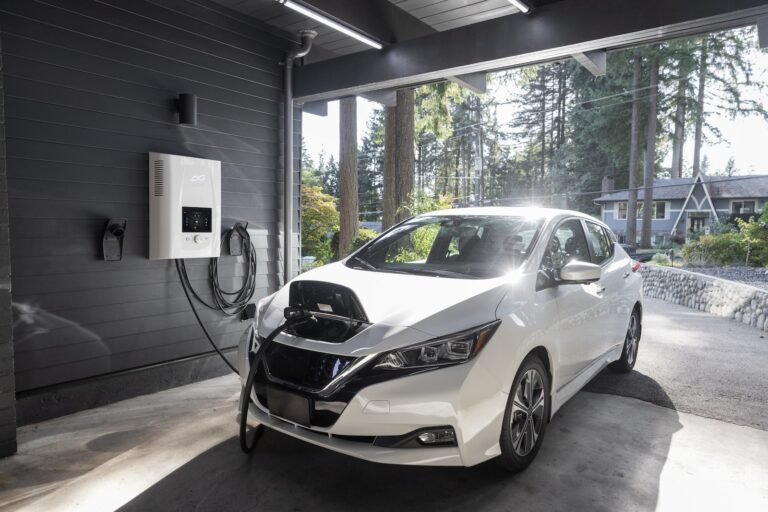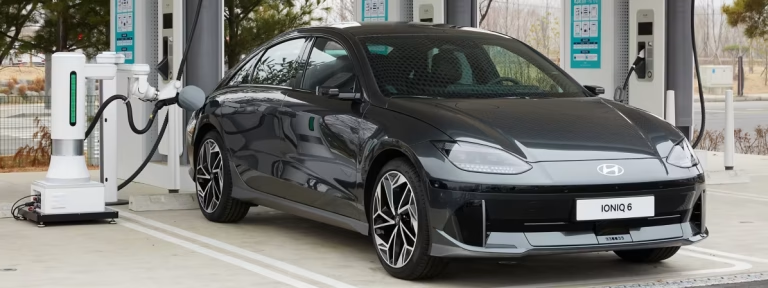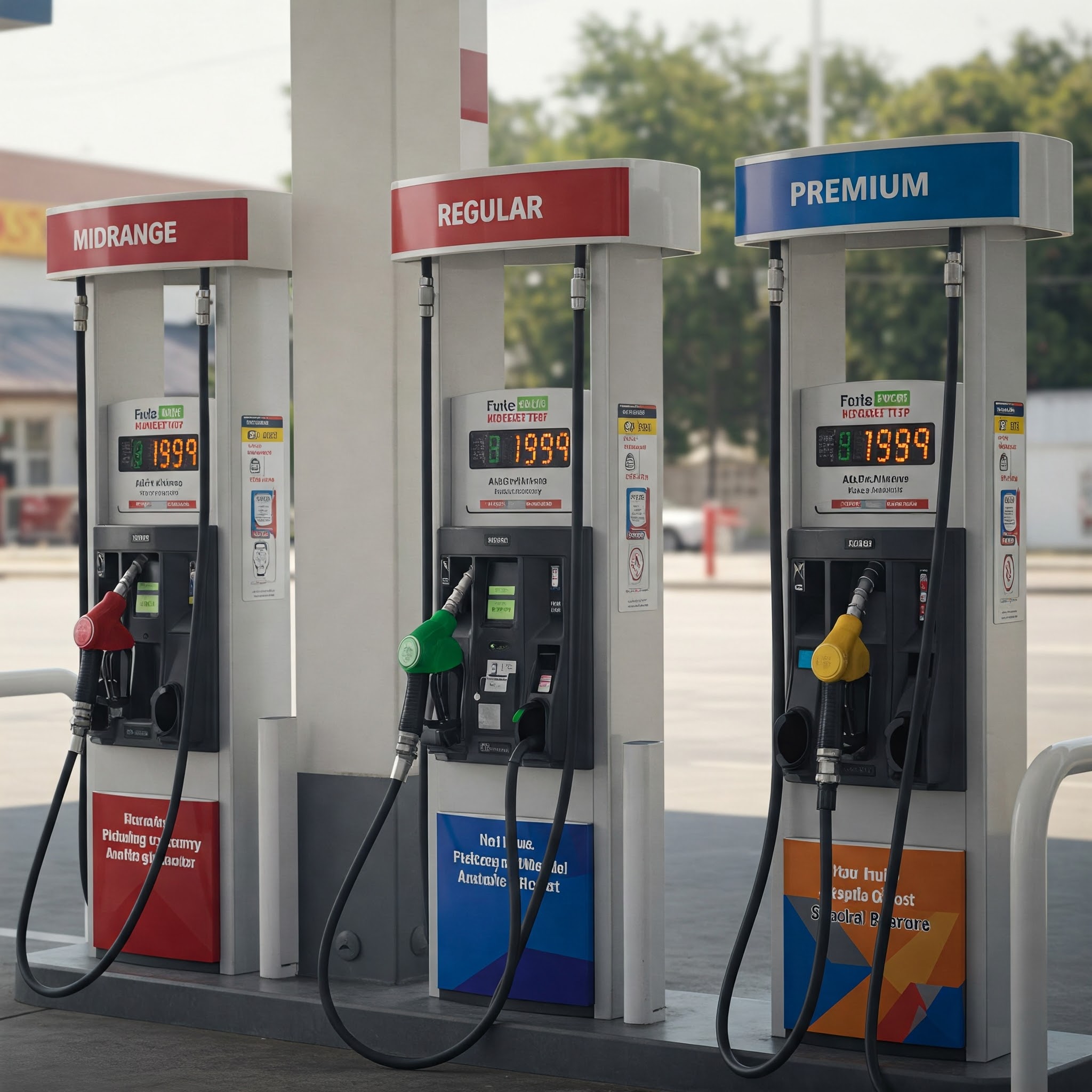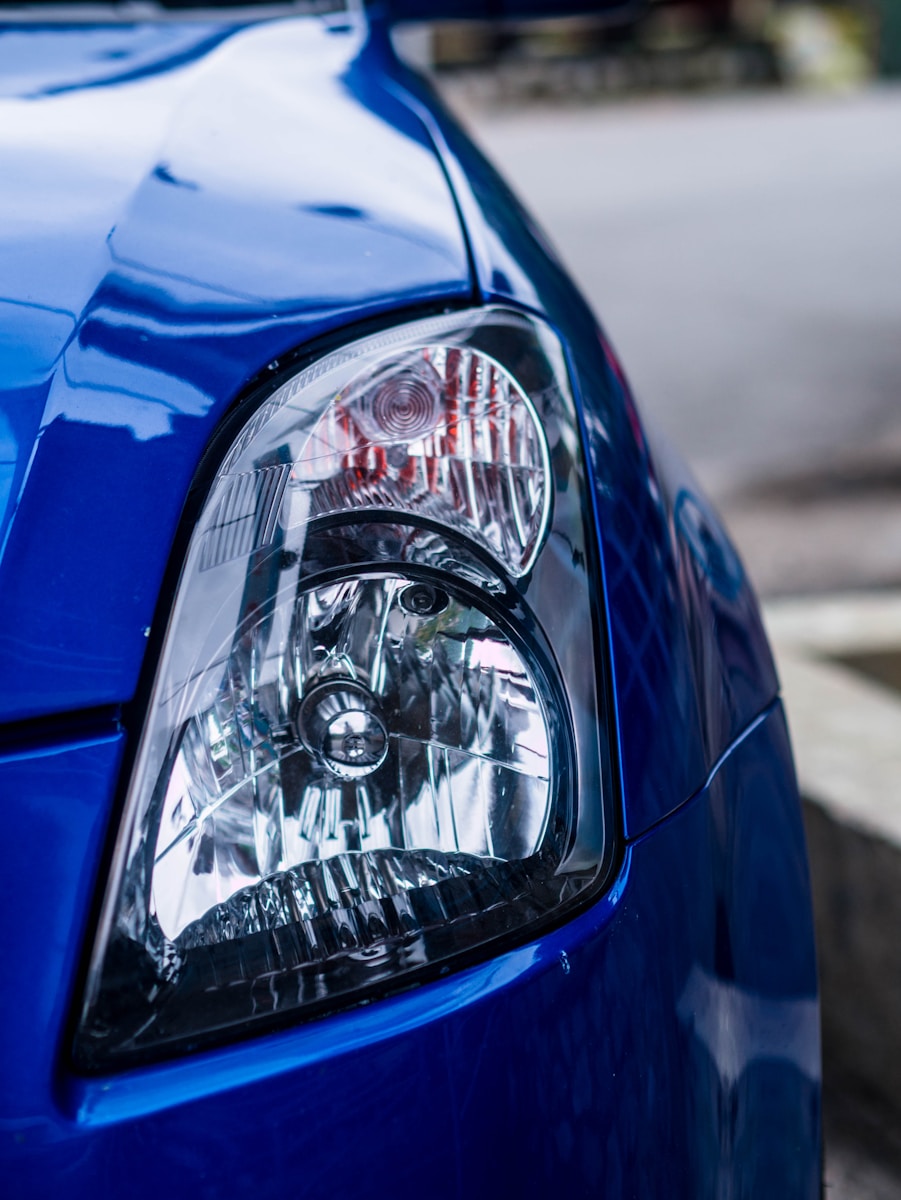Can I charge my Electric Vehicle in the rain
The short answer is a resounding yes. Charging your electric vehicle (EV) in the rain is not only possible but perfectly safe—thanks to decades of engineering innovation, rigorous international safety standards, and multiple redundant protection systems. Despite common fears about mixing water and electricity, modern EVs and charging equipment are specifically designed to handle wet conditions with ease.
This comprehensive guide dives deep into the science behind weatherproof charging, explains the real risks (and dispels the myths), and provides practical, user-friendly advice so you can charge confidently—rain or shine.
1. The Engineering Behind Weatherproof Charging: How EVs Defy “Water + Electricity” Myths
At first glance, plugging electricity into a car during a downpour might seem like a recipe for disaster. But this instinctive fear stems from outdated assumptions about how electrical systems work. Modern EV charging is not like using an old extension cord in a puddle—it’s more akin to connecting two highly intelligent, sealed devices that communicate before allowing any power to flow.
Let’s break down the key technologies and design principles that make rain-safe charging not just feasible, but routine.
IP (Ingress Protection) Ratings – The First Line of Defense
One of the most critical safety features of EV charging equipment is its Ingress Protection (IP) rating, a globally recognized standard (IEC 60529) that defines how well a device resists dust and moisture.
All reputable EV chargers—whether at home or in public—and the vehicle’s charging port itself must meet strict IP requirements. These ratings ensure that even under heavy rain, snow, or high humidity, water cannot penetrate critical components.
Here’s what the numbers mean:
- The first digit refers to protection against solid objects (like dust).
- The second digit indicates resistance to liquids (like water spray or immersion).
For example:
- IP65: Dust-tight and protected against low-pressure water jets from any direction.
- IP66: Dust-tight and resistant to powerful water jets—ideal for coastal or storm-prone areas.
- IP67: Dust-tight and can withstand temporary immersion in water up to 1 meter deep for 30 minutes.
- IP68: Fully dust-tight and protected against continuous submersion under manufacturer-specified conditions (e.g., deeper or longer than IP67).
These ratings aren’t theoretical—they’re validated through independent laboratory testing involving simulated torrential rain, pressurized sprays, and even full submersion. In fact, many Level 2 and DC fast chargers used in public stations are rated IP54 or higher, with premium models reaching IP66 or IP68.
Even the vehicle’s charging port typically carries an IP54 or IP55 rating, meaning it’s designed to resist splashing water and light rain without issue.
Some EVs, such as certain Tesla and Porsche models, have undergone testing where they were driven through flooded roads or sprayed with high-pressure hoses—simulating hurricane-force rain—and continued to charge safely.
Multi-Layered Safety Systems: Intelligence Meets Redundancy
Beyond physical sealing, EV charging relies on smart electronic safeguards that act as fail-safes long before any danger arises. These systems work together in layers, ensuring that even if one component fails, others will still prevent harm.
Ground Fault Circuit Interrupters (GFCIs)
A GFCI constantly monitors the balance of current flowing out and returning through a circuit. If even a tiny imbalance is detected—such as a few milliamps leaking to ground (possibly due to moisture)—the GFCI cuts off power within milliseconds.
This technology is already common in bathrooms and kitchens, but in EV charging systems, it’s enhanced and integrated directly into both the charger unit and sometimes the vehicle onboard charger.
Automatic Shutoff Protocols & the “Handshake” Process
Before any electricity flows, the EV and the charger perform a digital handshake—a series of electronic communications that verify:
- The connector is fully seated.
- The cable is intact.
- Grounding is correct.
- Environmental conditions are safe.
Only after this confirmation does the system allow power to begin flowing. If the connection is interrupted—say, by someone tripping over the cable or water somehow breaching the seal—the system immediately stops charging.
This means: No power flows until everything is perfectly aligned and secure.
Insulation Monitoring Systems (IMS)
Inside the EV, an IMS continuously checks the insulation resistance between the high-voltage battery and the vehicle chassis. If degradation occurs—potentially from prolonged exposure to moisture or aging—the system detects it and can trigger warnings or shut down charging automatically.
This is especially important for long-term reliability in humid climates or regions with frequent rainfall.
Surge Protection Devices (SPDs)
Lightning strikes or power grid fluctuations can cause dangerous voltage spikes. Surge protectors built into EVSEs (Electric Vehicle Supply Equipment) absorb or divert excess voltage away from sensitive electronics, protecting both the vehicle and the charging station.
These are standard in professionally installed home chargers and all public charging units, significantly reducing the risk of damage during thunderstorms.
Vehicle Design Integrity: Sealed, Shielded, and Secure
Modern EVs are engineered with safety as a top priority. The high-voltage battery pack—the heart of the vehicle—is housed in a hermetically sealed, impact-resistant enclosure typically located beneath the floor of the car. This casing is designed to be waterproof and corrosion-resistant, often tested to survive submersion in water for extended periods.
Additionally:
- Charging ports include rubber gaskets and spring-loaded covers that close automatically when unplugged.
- Drainage channels direct any incidental water away from electrical contacts.
- High-voltage wiring is double-insulated and routed through protective conduits.
These design choices ensure that even if rainwater pools around the charging port, it cannot reach internal circuitry or the battery.
2. Charging Safely in the Rain: Practical Guidelines for Users
While the technology ensures safety, following best practices maximizes protection and equipment longevity. These guidelines apply whether you’re charging at home, at work, or on the road.
Pre-Charging Checks
Before initiating a charge in wet conditions, take a moment to inspect your setup.
- Inspect Cables & Connectors: Look for visible damage such as fraying, cuts, cracked insulation, or exposed wires. Damaged cables should never be used, as they compromise both safety and performance.
- Clear Standing Water: Avoid plugging in if the charging port or connector is submerged. While the system is designed to handle wet surfaces, submersion increases risk and may interfere with the connection. Wipe away large puddles if possible.
- Dry Connectors if Possible: Use a clean, dry cloth to wipe off excessive moisture from the connector and port. While not strictly necessary for safety, doing so helps maintain a clean, reliable connection and reduces long-term wear.
During Charging
Once charging begins, the process is fully automated and safe—even in heavy rain.
- Handle with Mostly Dry Hands: While the system is safe, minimizing personal exposure to water while handling electrical connectors is a basic precaution. Wet hands do not increase electrocution risk due to the safety systems, but drying them first is sensible.
- Monitor Initialization: Watch for the confirmation light or notification on your car’s dashboard or the charging station display. This confirms that the handshake was successful and charging has started normally.
- Stay Comfortable: It is completely safe to sit inside your vehicle while it charges in the rain. The cabin remains electrically isolated, and the vehicle’s grounding systems ensure safety.
Equipment Choices Matter
Not all charging methods are created equal when it comes to outdoor use.
- Avoid Standard Domestic Outlets (Level 1): Using a regular household plug (NEMA 5-15) outdoors, especially with an extension cord, is strongly discouraged. These outlets lack weatherproof covers, GFCI integration (unless added), and robust surge protection. They are not rated for continuous outdoor exposure and pose a higher risk of overheating or ground faults in wet conditions.
- Use Dedicated Home/Public Chargers (Level 2/DC Fast): These are explicitly designed and certified for outdoor use. Most Level 2 EVSE units are rated IP65 or higher, include built-in GFCI, surge protection, and weather-resistant cabling. They are the safest and most efficient option for regular charging.
- Consider Cable Management: Use retractable cable reels, wall brackets, or simple hooks to keep connectors off the ground and out of puddles. This prevents unnecessary exposure to dirt, debris, and standing water, extending the life of your equipment.
3. Navigating Extreme Weather: Beyond Typical Rain
While standard rain poses no issue, truly severe conditions require additional caution. Understanding the difference between routine weather and hazardous extremes is key.
Thunderstorms & Lightning
- Risk: The primary concern during thunderstorms is not direct electrocution from the charging process, but rather voltage surges caused by nearby lightning strikes. A direct strike is extremely rare but could overwhelm even the best surge protectors.
- Guidance:
- If your vehicle is already charging when a storm hits, it is generally safe to let the session continue. Surge protection and grounding systems remain active.
- However, avoid starting a new charging session during an active thunderstorm, especially if lightning is within a few miles.
- If you need to unplug, do so only after the storm has passed. Never handle connectors during active lightning.
- If caught outside, staying inside your vehicle is one of the safest places—it acts as a Faraday cage, directing current around the cabin in the event of a strike.
Heavy Rain & Flash Flooding
- Risk: Submerged charging equipment or flooded vehicle undercarriages can pose risks, even with waterproof designs. While EVs are better than internal combustion engine (ICE) vehicles in flood scenarios (no air intake or exhaust), deep water can still affect sensors, brakes, or electrical systems.
- Guidance:
- Do not charge if the charging station, connector, or your vehicle’s charging port is submerged.
- Seek higher ground and wait for floodwaters to recede.
- Some chargers have flood detection sensors that disable operation when submerged, but relying on this is not recommended.
- Similarly, avoid driving through deep floodwaters. Even if the battery is sealed, water can damage other components or lead to loss of control.
Snow & Ice
Winter conditions present unique challenges, primarily related to physical obstructions.
- Clear Snow and Ice: Gently brush snow away from the charging port and connector. Ice buildup can prevent a proper seal or damage delicate pins.
- Remove Ice Carefully: Use a plastic tool or ice scraper—never metal, which can scratch contacts or break seals. Avoid pouring hot water, as rapid temperature changes can crack plastic or damage gaskets.
- Ensure Firm Connection: After clearing snow or ice, insert the connector fully and listen for the click or check the dashboard indicator. A poor connection may prevent charging or trigger error codes.
- Preconditioning Helps: Many EVs allow you to warm the battery before charging. Doing so in cold weather improves charging speed and efficiency and can help melt minor ice buildup near the port.
4. Debunking Common Myths and Fears
Despite the overwhelming evidence, misconceptions persist. Let’s address the most common concerns with clear, science-based facts.
Myth: “Charging in the rain will electrocute me.”
Reality: The multiple, redundant safety systems—including GFCIs, automatic shutoffs, and physical seals—make electrocution virtually impossible under normal or even heavy rainy conditions. No current flows until a safe, sealed connection is confirmed. Thousands of EV owners charge daily in rainy climates like the Pacific Northwest, UK, and Scandinavia without incident.
Myth: “Water will get into the battery and destroy my car.”
Reality: EV batteries are hermetically sealed within robust, waterproof packs located underneath the vehicle. Rainwater simply cannot penetrate this critical compartment during charging or driving. These enclosures are tested under extreme conditions, including submersion, vibration, and temperature cycling.
Myth: “Charging cables aren’t safe when wet.”
Reality: High-quality charging cables are specifically designed with thick insulation and waterproof connectors that meet high IP ratings. While you should avoid submerging them, rain or wet surfaces pose no danger. The connectors are engineered to seal out moisture upon insertion.
Myth: “I need a special cover for my home charger in the rain.”
Reality: Outdoor-rated home chargers are fully weatherproof (typically IP65 or higher) and do not require a cover for safety. Covers or awnings can reduce dirt accumulation and prolong equipment life, but they are optional. In fact, covering a charger while in use can trap moisture and create condensation—potentially doing more harm than good.
5. Maintaining Your EV Charging Gear in Wet Climates
Prolonged exposure to moisture and humidity requires simple maintenance to ensure long-term reliability, especially in coastal, northern, or tropical regions.
- Regular Inspections: Visually check cables, connectors, and your home charging unit monthly for signs of cracking, corrosion (especially on metal contacts), or physical damage. Pay attention to the strain relief where the cable meets the plug.
- Clean Connectors: Occasionally wipe connectors with a dry, clean cloth. If corrosion is visible—rare with modern gold-plated or nickel-coated contacts—consult the manufacturer before using any cleaning agents. Never use abrasive materials.
- Home Charger Care: If installed outdoors, ensure the area has good drainage and is not prone to pooling water. Consider periodic checks by a qualified electrician as part of general home electrical maintenance, especially after storms.
- Store Cables Properly: When not in use, especially for portable Level 1/2 cables, coil them loosely and store off the ground. Avoid leaving them in damp garages or on wet pavement, which can accelerate wear.
- Check for Firmware Updates: Many smart chargers receive updates that improve safety, efficiency, and compatibility. Keep your EVSE updated through the manufacturer’s app or web portal.
Charge with Confidence, Rain or Shine
Modern electric vehicles and charging infrastructure represent a triumph of engineering over elemental concerns. The combination of stringent international standards (IP ratings), multi-layered electronic safeguards (GFCIs, auto-shutoffs, surge protection), and robust physical sealing ensures that charging your EV in the rain is as safe as charging it in a dry garage.
By following basic precautions—inspecting equipment, avoiding submerged conditions, using dedicated chargers, and refraining from starting new sessions during active thunderstorms—EV owners can confidently power up their vehicles regardless of the weather.
The next time you see rain clouds gathering, rest assured: your EV charging routine doesn’t need to change. The technology has you covered, literally and electrically, allowing you to embrace sustainable driving without weather-related anxiety. Rain, snow, or shine—your EV is built for it.

